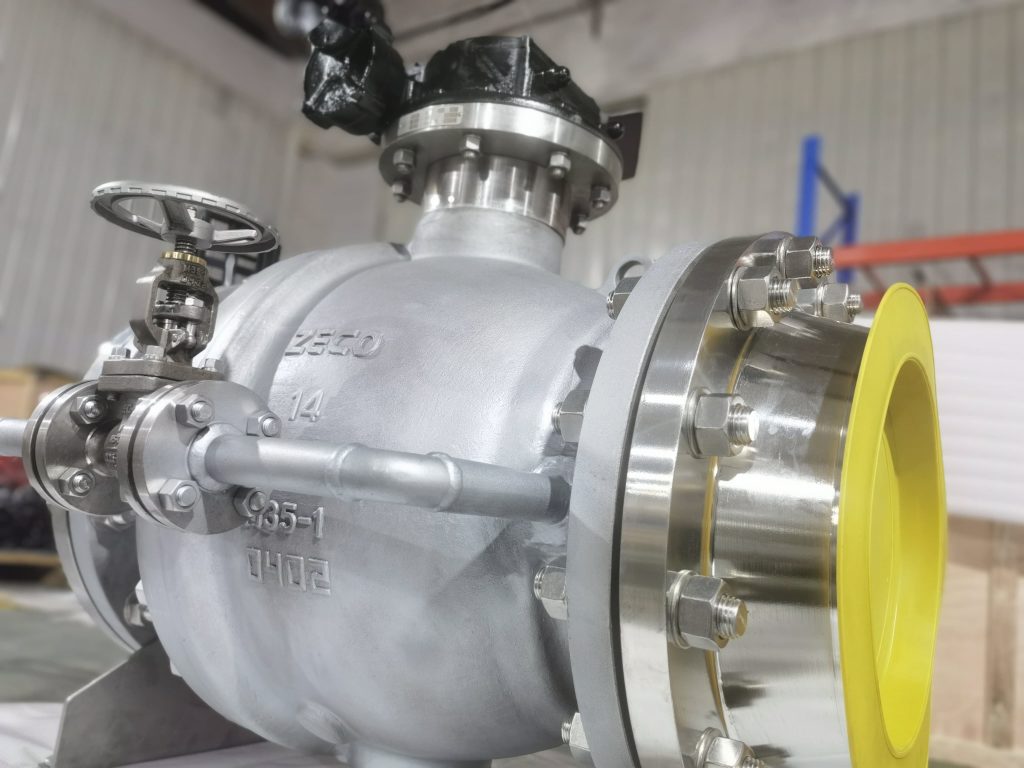Ball valves have cemented themselves as an indispensable fluid and gas control component across residential, commercial, and industrial settings. But what exactly are ball valves used for in real-world situations? As we’ll uncover in this comprehensive walkthrough, ball valves enable rapid on/off control, flow diversion, and exceptional sealing performance.

An Introduction to Ball Valves: What They Are and How They Work
Before diving into the multitude of ball valve applications, let’s briefly revisit what ball valves are and how they operate.
A ball valve utilizes a perforated rotatable ball to regulate fluid and gas flow. When the ball’s hole aligns parallel to the flow path, it permits passage. A simple 90° rotation slots the hole perpendicular, achieving a leak-tight shut-off. This quarter-turn on/off versatility, coupled with exceptional cycle life and bi-directional sealing has cemented the ball valve’s status as a true workhorse across residential, commercial, and industrial contexts.
Ball valves encompass several key components, including:
- Valve body: Houses internal components
- Ball: Flow control element with machined bore
- Seat seals: Prevent internal bypasses
- Stem: Connects actuator to ball
What are Ball Valves Commonly Used For? Exploring Day-to-Day Applications
Now that we’ve recapped ball valve basics, let’s explore some of today’s most prevalent applications.
Household Uses: Plumbing, Appliances, and More
Easy, reliable on/off control makes ball valves a smart choice for household flow tasks, including:
Main Water Shutoff
Located where municipal water feeds enter the home, main water shutoff valves provide emergency leak isolation. Their positioning necessitates durable, rapid-cycle components capable of achieving complete shutoff — criteria ball valves readily satisfy.
Individual Fixture Isolation
Embedded into supply lines upstream of appliances like dishwashers and washing machines, these valves permit isolated flow control when conducting repairs or replacements. Their positioning often mandates compact form factors — a ball valve specialty.
Hose Bibs
Outfitted onto exterior supply lines, hose bib ball valves deliver smooth metering for gardening equipment and general irrigation. Weather-resistant models boast durable seals and protective polymer coatings to combat outdoor elements.
Appliance Water Inlets
Integrated into appliance water lines, these valves govern fill flow for laundry, dishwashing, and other wet-process tasks. Inlet-specialized variants tout inlet strainers and check valves to uphold appliance protection.
Commercial/Municipal Applications
Municipal infrastructure and expansive commercial complexes lean heavily on ball valves, including uses like:
Fire Protection Systems
Positioned throughout commercial fire sprinkler networks, ball valves isolate damaged sections post-event while maintaining supply to unaffected zones. Robust sealing and rapid shutoff help restrict water loss.
Supply Main Control
Incoming commercial supply mains interface with large-bore ball valves to enable isolation for purging/line breaks while minimizing pressure drops. Full/reduced port variants strike an application-specific balance.
Landscape Irrigation
Embedded into expansive municipal green spaces and commercial complexes, landscaping ball valves govern widespread irrigation equipment more cost-effectively than gate alternatives while upholding smooth flow control.
Industrial Applications: Processing, Power, and Manufacturing
Industrial ball valve applications encompass:
Chemical Transport
Applied throughout chemical processing, storage, and transport systems, ball valves withstand exposure to hazardous media using exotic alloys and linings. Their compactness eases equipment integration.
Petrochemical Refining
Outfitted system-wide in refineries and rigs, ball valves deliver reliable, rapid isolation for critical processes while resisting temperature extremes, pressures, and contaminants. Availability up to 40”+ line sizes suits large-pipe integration.
Power Plant Operations
Used ubiquitously in steam heating, cooling, and generator subsystems, power-service ball valves bring precise flow control and bidirectional sealing to plant maintenance, helping limit downtime. They satisfy ANSI compatibility standards.
General Manufacturing
Embedded equipment-side to isolate machine cooling/lubrication loops for servicing, ball valves permit fast uptime preservation using a space-efficient design. Variants meeting international standards enable global OEM compatibility.
Additional Unique Applications Taking Advantage of Ball Valve Attributes
Beyond conventional installations, ball valves uphold specialty roles across:
Cryogenics
Exposed to super-low temperatures, these ball valves employ glass-filled PTFE seals to maintain flexibility. Stainless housings resist embrittlement while insulting handles protect operators. Custom designs prevent moisture ingression that could freeze internal components.
High Pressure/Temperature Steam
Available in body ratings exceeding ANSI 2500, these heavy-duty valves harness robust materials like 17-4PH stainless to resist extreme steam environments upto 1450° F. Packing followers help preserve seal integrity despite brutal thermal transients during cycling.
Sanitary Service
Employing electropolished stainless and crevice-free cavity filler seats, sanitary ball valves satisfy stringent cleanliness and contamination standards for industries like pharmaceutical and bioprocess. Tri-clamp end connections streamline integration while facilitating simplified in-line cleaning.
Subsea and Topside Offshore
On rigs and pipelines, these valves resist seawater corrosion using SUPER duplex housings and chloride-resistant coatings. Hydraulic/electric actuation integrate automation while meeting rigorous certification benchmarks for underwater reliability.
No doubt about it – modern ball valves serve an incredibly diverse range of residential, commercial and industrial flow control challenges ranging from home ice makers to offshore drilling. Their versatility is virtually unrivaled. Broad material selection empowers valves tailored to everything from cryogenic use below -350° F to blistering steam duties exceeding 1450° F – an envelope spanning over 1800 degrees!
When exploring valves for your next project, I encourage you to consider the value durable, fast-acting ball valves can infuse. And should you have any lingering questions on application specifics or technology nuances, never hesitate to drop me a line using the form below – I’m always happy to help out!












